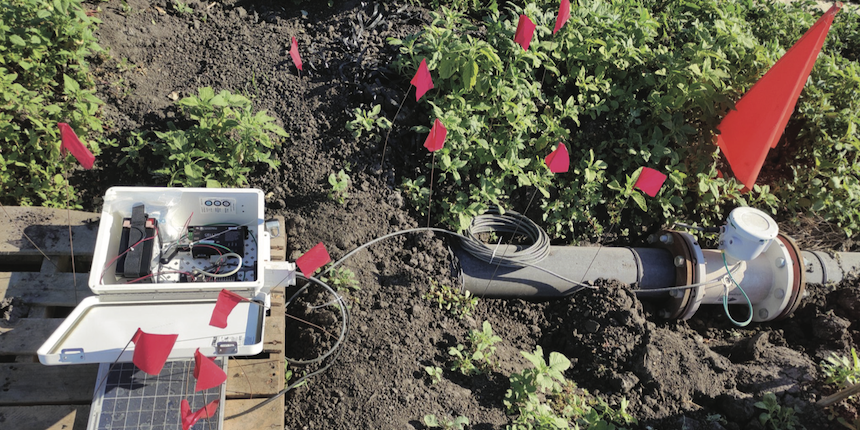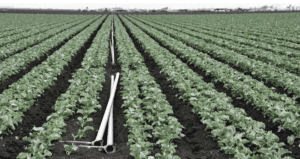

Jul 8, 2022CropManage tool lowers fertilizer, water use
Since the free online irrigation and fertility decision support tool CropManage launched in 2011 for use in lettuce fields, the University of California has added more than two dozen row and permanent crops.
Users can typically reduce fertilizer and water use by 20% to 40% while maintaining or even increasing yields, said Michael Cahn, a UC Cooperative Extension farm advisor in Monterey, San Benito and Santa Cruz counties who spearheads tool development.
Mark Mason, a pest control advisor and farm manager for Nature’s Reward based in Salinas, said he’s seen the tool’s benefits first-hand.
Since he began using the program on Iceberg lettuce in about 2014, Mason has added Romaine lettuce, leaf lettuce, escarole, endive and most recently celery. As a result, it also helped him answer some pressing questions.
“How do we really know when to water?” he said. “We always had this increment and did so every so many days and so many hours. How do I really know when to fertilize?”




Working with Cahn, Mason conducted a number of split block trials comparing his standard practices to CropManage recommendations.
“I kind of had to prove out the model to myself,” he said. In the end, he found significant savings for both water and nitrogen applications.
The model helped them reduce nitrogen use about 30%, depending on the year, as well as identify irrigation system inefficiencies, Mason said. Nevertheless, he still views it as a tool to aid decision making.
“We don’t follow exactly what it says if we feel like it didn’t recognize something,” Mason said. “There’s kind of a strategy and some communication that has to happen and some management that has to happen more than just going out to fertilize.”
State groundwater and nitrogen regulations
Improving water and nitrogen management has taken on new meaning in recent years as produce buyers increasingly seek sustainability metrics from suppliers, Cahn said.
In addition, the state’s Sustainable Groundwater Management Act requires severely overdrafted groundwater basins to balance extraction with recharge beginning in 2040. And the Irrigated Lands Management Program requires growers to annually report irrigation and nitrogen (N) inputs and crop withdrawals.
As part of that program, growers along California’s Central Coast from southern Santa Clara County to Santa Barbara County will be limited in the amount of N they can use.




Free user accounts
The CropManage website, cropmanage.ucanr.edu, can be accessed from a smartphone, tablet or desktop computer. Users set up a free online account and begin entering information for their farm or specific fields. Cahn said they’re also adding a Spanish version.
To set up a field location, users simply click on a Google map integrated into CropManage. The soil type, based on the National Resource Conservation Service Soil Survey Geographic Database, is automatically populated after the user chooses the field location.
Then users select a nearby California Irrigation Management and Information System (CIMIS) station before choosing the crop type in the drop-down menu.
The program also allows users to customize their information by tying in remote infield soil moisture and flow meter sensors, for example. In addition, it has an application programming interface (API) that can connect with other software, such as on-farm weather stations or farm management and recordkeeping programs, Cahn said.
CIMIS, a statewide network of more than 145 automated weather stations operated by the California Department of Water Resource, provides ET information based on a well-watered green lawn. To convert it to the actual ET rate for a specific crop – known as the crop coefficient – Cahn said growers would have to do lengthy calculations. They also would have to factor in the crop growth stage.
That’s where CropManage comes in. Based on the information supplied by the user, program algorithms calculate the ET crop coefficient and recommend optimal irrigation intervals and run times.
“We’ve modeled the canopy of the different crops by taking hundreds of pictures of the crop,” Cahn said of the algorithms. “The more leaf area the crop has, the more water it uses.”
CropManage nitrogen recommendations are based on a number of factors, including soil samples, soil quick test results, residual plant material in the soil, irrigation water nitrate test results and soil mineralization. Again, the software factors in crop growth stage as young plants typically don’t require as much nitrogen as larger ones or those entering the reproductive stage.
The more information the user can provide, the more accurate the output. Cahn said he is confident in the program’s recommendations because they have been ground- truthed. Before a new crop is added, he said farm advisors conduct field trials to compare the online recommendations to cooperating growers’ standard practices.




Ground-truthing a new crop
Among those is Zheng Wang, a UCCE vegetable and irrigation farm advisor in Stanislaus County who has been working with two area growers to validate CropManage for watermelons the past two years. Complicating the work has been a trend toward grafted watermelon plants, which have different growth patterns and larger root systems, he said. This may change water and nutrient requirements and timing.
Watermelons also differ from other crops supported by CropManage as they have a growing season that could be up to nearly six months long compared to processing tomatoes with 120 days. Many of the leafy greens have only a 60-day season.
In addition, watermelons are harvested not once but multiple times during the season, Wang said. After each harvest, applying additional nitrogen and irrigation to the field is critical to spur new growth and continue fruit production.
“Making sure the water can be used most efficiently without compromising the yield is quite important,” he said.
Wang also is in his first year of ground-truthing CropManage for processing tomatoes on bed widths ranging from 60 to 80 inches as well as single- and double-row plantings.
Much of the funding to develop the decision support tool and continue improvements has come from California Department of Food and Agriculture Fertilizer Research and Education grants, Cahn said.
– Vicky Boyd, contributing writer; Photo at top: Zheng Wang, a University of California Cooperative Extension vegetable and irrigation farm advisor, has been working with two growers the past two years to validate CropManage for watermelons. Photo courtesy of Zheng Wang, UCCE














